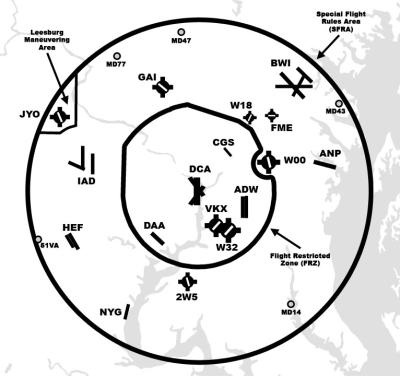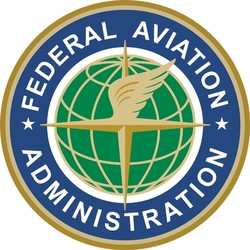New Procedures Take Effect November 30th
The FAA has codified special flight rules and flight
restrictions for certain aircraft operations in the Washington,
D.C. Metropolitan Area. A NOTAM scheduled to go into effect on
November 30th makes changes in rules that went into effect on
February 17th, 2009. Additional special instructions required for
operating in the Washington, DC Metropolitan Special Flight Rules
Area (DC SFRA), (Subpart V, 14 CFR 93.337), are now published in
two NOTAMs, one for the DC SFRA and another for that part of the DC
SFRA known as the Leesburg Maneuvering Area.

As part of the new rules, a flight plan will no longer required
for egress and ingress procedures in what is known as the Leesburg
Maneuvering Area. Aircraft departing the area must squawk
transponder code 1226. Pilots departing Leesburg, VA Executive
Airport (KJYO) must announce the aircraft call sign, aircraft type
and intended departure runway on the published CTAF prior to
departure, and must exit the Leesburg maneuvering area via the most
direct lateral route while avoiding the SFRA. Pilots need not
communicate with Potomac TRACON (PCT) unless otherwise
directed.
Aircraft entering at the Leesburg maneuvering area must squawk
transponder code 1227 prior to entering the Leesburg maneuvering
area to indicate the pilot's intent to land at KJYO. Before
entering the Leesburg maneuvering area, pilots must announce the
aircraft call sign, aircraft type and runway of intended landing on
the published CTAF, and must enter the Leesburg maneuvering area
via the most direct route. Arriving pilots also do not need to
communicate with Potomac TRACON (PCT) unless otherwise
directed.
For flight operations, including ultra light vehicles and
unmanned aircraft systems (UAS), each aircraft must be equipped
with at least one operable two-way radio capable of communicating
with Potomac TRACON (PCT) on appropriate ATC radio frequencies, as
well as an operating transponder with automatic altitude reporting
capability as specified in 14 CFR section 91.215.
Pilots should monitor VHF guard 121.5 or UHF guard 243.0, if
able.

Except for FAA approved DoD, FAA approved law enforcement, and
waivered lifeguard/air ambulance operations flights, all aircraft
operating under visual flight rules are restricted to an indicated
airspeed of 180 knots or less. If unable, the pilot must contact
Potomac TRACON on (PCT) and advise them of the aircraft's
operational limitations prior to entering the Leesburg maneuvering
area or DC SFRA.
Pilots wishing to conduct traffic pattern operations at KJYO
must file a DC SFRA flight plan, obtain and squawk the assigned
transponder code from Potomac TRACON (PCT), establish and maintain
two-way radio communications with Potomac TRACON (PCT) before
entering and while operating in the Leesburg maneuvering area /DC
SFRA, and obtain ATC authorization to perform practice approaches
from Potomac TRACON (PCT); authorizations will be workload
permitting.
As of November 15, 2011, any pilot operating an aircraft under
VFR within the DC SFRA who becomes aware of an inability to comply
with the requirement to maintain radio contact with ATC must
immediately change the transponder code to 7600 and exit the DC
SFRA by the most direct route, or if the aircraft departure point
is closer, return to the departure point by the most direct route.
These procedures do not authorize penetration of any restricted or
prohibited airspace.
Aircraft must squawk the ATC assigned transponder code or
appropriate Leesburg maneuvering area beacon code at all times.
Code 1200 is not permitted at any time within the Leesburg
maneuvering area or SFRA.
 Classic Aero-TV: UAvionix - Transitioning Between Manned & Unmanned Technologies
Classic Aero-TV: UAvionix - Transitioning Between Manned & Unmanned Technologies ANN's Daily Aero-Term (09.14.25): Dead Reckoning
ANN's Daily Aero-Term (09.14.25): Dead Reckoning Aero-News: Quote of the Day (09.14.25)
Aero-News: Quote of the Day (09.14.25) ANN's Daily Aero-Linx (09.14.25)
ANN's Daily Aero-Linx (09.14.25) Airborne-NextGen 09.09.25: Textron Nixes ePlane, Joby L/D Flt, Swift Approval
Airborne-NextGen 09.09.25: Textron Nixes ePlane, Joby L/D Flt, Swift Approval




